
When a journal adds a new associate editor, that change means more for readers than just a tweak to the masthead. New associate editors bring new experiences, new perspectives, and new ideas to their publications. Get to know some of ACS’s latest editors and learn what unique gifts they’ll be bringing to their respective journals.
Raffaella Buonsanti, ACS Catalysis

What is your research focus? What initially attracted you to your field?
My group research is highly multidisciplinary and spans from materials chemistry and nanoscience to catalysis, electrochemistry, and sustainability. We are interested in the synthetic development of well-defined nanocrystals and their use to advance the current knowledge in the electrocatalytic conversion of small molecules as well as to advance different energy technologies. To tailor materials with atomic precision is a beautiful art on its own. To target those who can help to address fundamental challenges towards the transition to a cleaner and sustainable future is even more motivating!
What do you hope to bring to your journal?
As an Associate Editor of ACS Catalysis, I will handle manuscripts in heterogeneous catalysis and, more specifically, in electro- and photo-catalysis. I will particularly value those studies which contribute to fundamental advances in these subdisciplines.
What are the major challenges facing your field today?
One of the main challenges in electrocatalysis is to find catalysts that are active, selective, and stable for long-term operation. I believe that well-defined material platforms can teach us a lot about the design criteria towards this ultimate goal. Therefore, the synthesis development of those material classes relevant for catalysis should become increasingly more important.
Do you have a recent paper in an ACS journal that you’d like to highlight?
Among the papers from my group, I would highlight our recent one published in ACS Catalysis:
Elucidating the Facet-Dependent Selectivity for CO2 Electroreduction to Ethanol of Cu–Ag Tandem Catalysts
ACS Catal. 2021, 11, 8, 4456–4463
DOI: 10.1021/acscatal.1c00420
In this joint experimental-computational work, we use well-defined nanocrystals to elucidate reaction pathways. The facet-dependent selectivity of Cu-Ag tandem catalysts evidence that *CHx-*CO coupling, instead of *CO-*CO coupling, is the preferred pathway towards ethanol formation in the electrochemical CO2 reduction.
Among papers from others, the last one which I enjoyed reading is:
Unifying Concepts in Electro- and Thermocatalysis toward Hydrogen Peroxide Production
J. Am. Chem. Soc. 2021, 143, 21, 7940–7957
DOI: 10.1021/jacs.0c13399
I find the comparison between electro- and thermo- catalysis to be an interesting topic.
Anything else you’d like readers to know about you?
In addition to being passionate about all the different aspects of my job, I enjoy spending time outdoors, running, cats and a glass of red wine in good company!
***
Pimchai Chaiyen, ACS Catalysis

What is your research focus? What initially attracted you to your field?
My research interests are in the broad areas of enzyme catalysis, enzyme engineering, systems biocatalysis, metabolic engineering, and synthetic biology. We work with various flavin-dependent, PLP-dependent, redox, aldolase, and hydrolase enzymes. Our research expands both the depth and breadth of our areas of interest. Some members of our team focus on deepening our understanding of enzymatic mechanisms, discovering new enzymatic functions, and re-routing of metabolic networks. Others develop applied technologies and prototypes and work with engineering specialists on scaling up and implementation for industry. Both parts of the team work together and collaborate with various government, private, and community sector entities to deliver innovative solutions for sustainability issues such as waste management, climate change, sustainable agriculture and food safety.
What attracted me was the tremendous scope to learn and research in this field, working alongside highly respected mentors and colleagues. What’s sustained my interest over the years is that I have been able to carry on research and coach many talented, committed students. And my new passion is to turn our research into socially and industrially beneficial practical applications.
I was originally trained as a chemist at the undergrad level, gaining experience working with the isolation of natural products and in organic synthesis. I understand the challenges of chemical catalysis and I think some of those challenges can be overcome by using enzymes. My Ph.D. training was on mechanistic understanding of a flavoenzyme catalyzing hydroxylation plus aromatic ring breaking. In my Ph.D. labs (jointly supervised by the late Professor Vincent Massey and Professor David P. Ballou at University of Michigan, Ann Arbor), we were very passionate about understanding the mechanisms, structures, and functions of flavoproteins. My mentors were very good teachers and highly experienced in experimental designs to solve puzzles of enzyme mechanisms. We used several transient kinetics techniques such as stopped-flow spectroscopy and mechanistic probes such as isotope effects and substrate analogs to understanding how enzymes work. I learned a lot about mechanistic enzymology from my mentors, lab members, and their visiting collaborators during that time.
Then, I returned to Thailand to set up my own lab at the Department of Biochemistry, Mahidol University. We pretty much focused on in-depth mechanistic studies of flavin-dependent enzymes during the first 5-10 years of my career. Then, we expanded into enzymes in other classes such as PLP-dependent enzymes. After accumulating knowledge and experience in a variety of reactions, we started to explore the possibilities of using enzymes or metabolic engineered cells for chemical synthesis or production of valuable compounds. In 2017, I was offered a position to set up a new lab and start a graduate training program at Vidyasirimedhi Institute of Science and Technology (VISTEC). I took up the challenge which also came with an opportunity to expand our research scope and scale. We are now leveraging our mechanistic understanding and research into novel uses and improved enzymes to construct new metabolic pathways. When we set up projects these days, our ultimate goal is usually to develop technologies for real use.
What do you hope to bring to your journal?
ACS Catalysis excels in promoting good science and is already well respected as a premier publishing platform. I will do my best to facilitate fair judgment for authors and at the same time work with the editorial team to expand the journal’s footprint into rapidly developing fields. I think it would be good if we can showcase articles reporting developments in biocatalysis that have potential industrial applications or can help solve issues impacting society, such as climate change and sustainability.
What are the major challenges facing your field today?
Enzymes are useful biocatalysts and a vast body of reports on their potential uses in various reactions and applications is available on a lab scale. However, when it comes to real applications, the technologies are not always as robust and scalable as in small-scale studies. I would love to see the wider use of enzymes or whole cells in industry because I think biocatalysis has great potential to contribute positively to the development of clean and green technology. Solid mechanistic understanding and detailed reports of biocatalyst properties should be useful for the development of technology.
***
Syuzanna Harutyunyan, ACS Catalysis
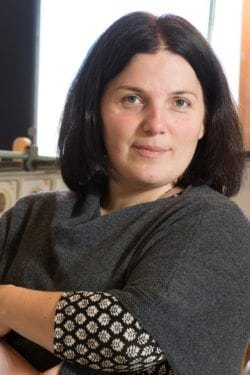
What is your research focus? What initially attracted you to your field?
In my research group, we focus on developing new concepts in catalysis, catalytic transformations for the synthesis of chiral molecules, as well as designing auto-/cross-catalytic systems. I became attracted to the field of catalysis during my PhD when I realized that I could discover methods to synthesize molecules that one day might allow the development of new drugs used to cure people.
What do you hope to bring to your journal?
I hope that my experience in both academic and industrial research, focused on various aspects of catalysis, will allow a fair selection of excellent work in catalysis research. I will be looking for high-quality manuscripts that describe either something new, unusual, unexpected, or very useful and that give appropriate credit to the relevant literature.
What are the major challenges facing your field today?
In recent years the emphasis of funding agencies has shifted increasingly towards application-driven research and knowledge utilization. Consequently, funding for curiosity-driven research in general, and certainly also including catalysis, is becoming a major limiting factor for further development.
What do you think is the most interesting and/or important unsolved problem in your field?
Selective, on-demand cleavage/functionalizations of unactivated carbon-carbon bonds is one of the important objectives in current organic chemistry, but until now it remains elusive. Achieving this will be an important milestone and catalysis will be key to address this problem.
Do you have a recent paper in an ACS journal that you’d like to highlight?
Highlighted in the November 2020 Spotlights on Recent JACS Publications:
Nucleophilic Dearomatization of N-Heteroaromatics Enabled by Lewis Acids and Copper Catalysis
J. Am. Chem. Soc. 2020, 142, 47, 20247–20256
DOI: 10.1021/jacs.0c09974
Anything else you’d like readers to know about you?
I studied chemistry in Armenia, did my Ph.D. in Russia, and then continued my academic career in the Netherlands. I hope that this scientific and cultural background and experience will help me to provide a fair service to the catalysis community in my new role of Associate Editor.
***
Andrea Armani, ACS Photonics
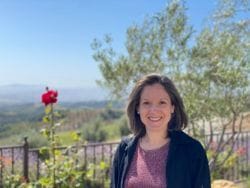
What is your research focus? What initially attracted you to your field?
I work on developing new types of optical materials and integrated optical devices that can be used in a wide range of applications from portable disease diagnostics to telecommunications. In other words, we make materials that can be activated or controlled by light, and we make optical devices and systems for a wide range of applications. As an undergraduate student, I enjoyed all of my classes – chemistry, biology, and physics. While I settled on physics, I never lost my love for “all of the sciences”. As I have progressed in my career, my curiosity for learning new fields has kept pace. I was originally attracted to optics because, as a field, photonics has cross-cutting applications, allowing me to explore and continually learn new topics.
What do you hope to bring to your journal?
Often optics researchers working at the interface between two or more fields or researching very applied topics face challenges with publication. I hope to bring an appreciation for these types of extremely challenging research efforts.
What are the major challenges facing your field today?
There are so many ways to answer this question. The major technical challenges are our ability to reliably package devices at scale and the lack of truly interdisciplinary training. The first requires access to packaging core research labs and student training in device packaging, and the second requires universities offering rigorous coursework (not bootcamps or workshops) designed for students outside of a degree program. And then there are the major societal challenges. Acceptance of scientific findings by society and using data to drive policymaking are universal challenges. Providing sufficient funding for research instead of piecemeal grants and improving the entire peer-review process and timeline are challenges facing all fields.
What do you think is the most interesting and/or important unsolved problem in your field?
There are so many important and unsolved questions! And finding one answer just leads to more questions, which is my favorite part of research. If I had to choose one, it would be developing a way to track or monitor a largescale cellular system (primate or human) in vivo at the single-cell level continuously for long periods of time (days). To accomplish this feat requires many innovations, including developing an imaging method that can be “passed down” through multiple cell cycles or is independent of cell cycles, that is compatible with people (including movement), and that has high resolution. But, if invented, it would give medical and biomedical researchers unprecedented insight into human physiology.
Do you have a recent paper in an ACS journal that you’d like to highlight?
Supercontinuum Generation in High Order Waveguide Mode with near-Visible Pumping Using Aluminum Nitride Waveguides
ACS Photonics 2021, 8, 5, 1344–1352
DOI: 10.1021/acsphotonics.0c01785
Anything else you’d like readers to know about you?
I have an amazing husband who is also an engineer and who works in industry. We are truly a team, supporting each other.
***
Namkyoo Park, ACS Photonics
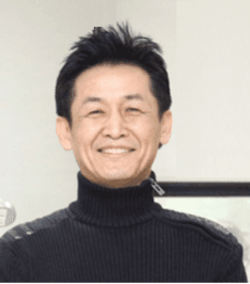
What is your research focus? What initially attracted you to your field?
My research portfolio includes nanophotonics, plasmonics, metamaterials, and their applications. With my latest interests in correlated disorder systems built upon the above platforms, we are also working on functional devices and intelligent systems exploiting the full degree of freedom of wave parameters in small-world networks.
What do you hope to bring to your journal?
With my background in physics, nanophotonics, and optical signal processing, I would like to contribute to ACS photonics expanding into fields of photonics such as photon-based quantum science, and machine learning/AI.
What are the major challenges facing your field today?
New materials of designer property always have been the grounds and challenges for achieving future devices and systems.
What do you think is the most interesting and/or important unsolved problem in your field?
There exist lots of missing links and therefore opportunities between the traditional photonics and network sciences. I believe that it became a good time to reconsider the nano-photonics-based computing devices and systems mimicking the neural networks, under the big umbrella of the small-world networks
***
Laura M. Lechuga, Analytical Chemistry
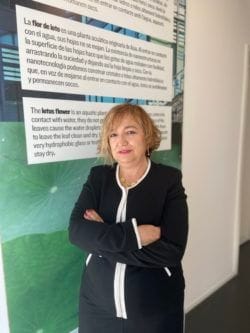
What is your research focus? What initially attracted you to your field?
My research focus is on optical Biosensors (plasmonics and silicon photonics), lab-on-chip integration, biofunctionalization, and analytical applications. This field attracted me because it is a combination of fundamental and applied science, with strong technological development, and it can be applied in real scenarios.
What do you hope to bring to your journal?
I hope to bring my expertise in combining new technological diagnostics devices with their application in the health and environmental fields.
What are the major challenges facing your field today?
A major challenge is how to transfer the biosensor technologies to real products, in such a way that these devices can have a real impact in the decentralized diagnostics field in a near future. I am convinced that the post-COVID era will accelerate the translation of the biosensor technology to the commercial stage, as we have experienced the bottleneck of relying mainly on centralized diagnostics.
What do you think is the most interesting and/or important unsolved problem in your field?
The translation from the lab to the market.
Do you have a recent paper in an ACS journal that you’d like to highlight?
How Nanophotonic Label-Free Biosensors Can Contribute to Rapid and Massive Diagnostics of Respiratory Virus Infections: COVID-19 Case
ACS Sens. 2020, 5, 9, 2663–2678
DOI: 10.1021/acssensors.0c01180
***
Chunzhong Li, Industrial & Engineering Chemistry Research

What is your research focus? What initially attracted you to your field?
My research focuses on nanomaterials and material chemical engineering: property, structure, and preparation of functional nano-materials, designed synthesis of new energy materials by confined reaction, fabrication and processing of polymer-based nanocomposites, and the engineering properties and process scale-up for nano-materials. A small particle has unlimited power, this magic power of nanomaterials attracted me to this field.
What do you hope to bring to your journal?
I hope to bring wonderful imagination and rigorous scientific research to my journal.
What are the major challenges facing your field today?
The major challenge in my field is the connection between scientific lab research and industrial engineering research.
What do you think is the most interesting and/or important unsolved problem in your field?
The most interesting problem is how to reduce the cost of producing nano-materials in industry.
Do you have a recent paper in an ACS journal that you’d like to highlight?
Improvement of Ni/Al2O3 Catalysts for Low-Temperature CO2 Methanation by Vanadium and Calcium Oxide Addition
Ind. Eng. Chem. Res. 2021, 60, 18, 6554–6564
DOI: 10.1021/acs.iecr.0c05556
***
Dan Zhao, Industrial & Engineering Chemistry Research
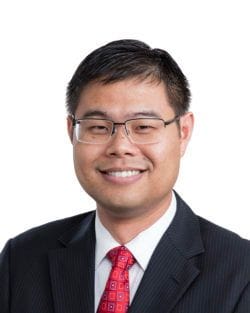
What is your research focus? What initially attracted you to your field?
My research mainly focuses on porous materials and hybrid membranes, especially metal-organic frameworks (MOFs). I started to work on MOFs during my Ph.D. study back in 2006 when I was asked to choose my Ph.D. topic. Since I have B.S. and M.S. degrees in organic polymers, I thought MOFs were conventional polymers because they are also called porous coordination polymers (PCPs). Later I realized I was wrong, but I feel lucky to work in this fascinating field to tackle some of the most challenging issues in clean energy and environmental sustainability.
What do you hope to bring to your journal?
Being trained as a materials chemist while working in a top chemical engineering department, I want to expand the boundary of chemical engineering and see how innovation in materials can benefit chemical engineering and processes.
What are the major challenges facing your field today?
Several MOFs have been identified with promising performance in certain areas, such as gas storage and separation. However, the ultimate solution should be system-based, and we still have not seen many commercially successful cases. For example, hydrogen storage would require not only good adsorbent materials but also delicate tank design and thermal management. Another example is adsorptive carbon capture, a cyclic process in which the regeneration and impurity tolerance are equally as crucial as adsorbent capacity and selectivity. The collaborative efforts among chemists, materials scientists, and chemical engineers are essential in addressing those challenges.
What do you think is the most interesting and/or important unsolved problem in your field?
To identify a niche area in which MOFs can demonstrate superior advantages over other materials and technologies.
Do you have a recent paper in an ACS journal that you’d like to highlight?
Post-combustion CO2 capture from stationary emitters has large footprints and requires enormous amounts of adsorbents for the adsorptive carbon capture process. Therefore, scale-up manufacturing and cost control would be necessary should MOFs be used. UTSA-16 is a MOF that has been proven promising in carbon capture by several process studies, while it suffers from slow formation kinetics and relatively expensive cobalt starting materials. Realizing that the poor formation kinetics comes from different metal coordination sites, we used a mixed-metal approach by replacing the cobalt reagent with a cheaper zinc one, and obtained mixed-metal UTSA-16 under significantly milder conditions, paving the way for the mass production of this promising material. This study demonstrates how materials innovation can benefit the engineering process.
Accelerated Formation Kinetics of a Multicomponent Metal-Organic Framework Derived from Preferential Site Occupancy
Inorg. Chem. 2020, 59, 13, 9350–9355
DOI: 10.1021/acs.inorgchem.0c01226
Anything else you’d like readers to know about you?
Our group locates in Singapore, an exciting country full of opportunities. You are welcome to come and visit us.